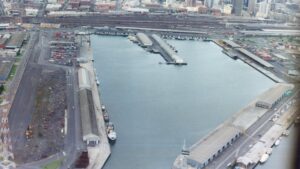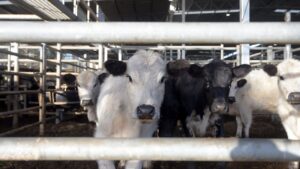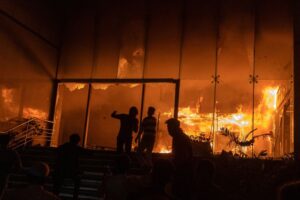
Sue Carroll, a seasoned bush nurse, has witnessed her share of grim medical emergencies. Among the most critical are head injuries and skull fractures, which demand immediate attention. Carroll serves as the nurse manager at Swifts Creek Bush Nursing Centre, located nearly 400 kilometers from Melbourne’s hospitals. In such remote areas, serious injuries often necessitate CT scans to assess damage and determine treatment, yet access to these essential scans is limited, requiring patients to be transferred to major cities.
“Time is critical, so you need them moved immediately,” Carroll emphasized, highlighting the urgency of the situation. In response to this pressing need, Australian researchers are developing an innovative mobile CT scanner designed to enhance healthcare access for rural and remote communities.
Innovative Mobile Medical Technology
The Design Health Collab at Monash University is spearheading the design of these new CT scanners, collaborating with medical technology developer Micro-X and Johns Hopkins University in the United States. Although still in the early stages of development, the team aims to create a compact scanner weighing just 225 kilograms, a stark contrast to the conventional two-tonne models. This reduced weight would allow the technology to be fitted into smaller vehicles, unlike current mobile CT scanners that require large trucks.
The envisioned system would provide full-body scans and be applicable for general diagnostic imaging, including assessments for abdominal pain, chest pain, head injuries, neurological symptoms, cancer follow-ups, and trauma evaluations. If successful, these mobile scanners could operate on-call like ambulances or follow a scheduled route through regional towns, offering regular healthcare opportunities.
Carroll expressed optimism about the potential impact of these scanners, particularly if they could visit communities regularly, akin to mobile breast screening services. “That sort of thing would work, if you knew they were coming into the area … to be able to book ahead,” she noted.
Addressing the ‘Postcode Lottery’ in Rural Health
The project has secured funding from the US Advanced Research Projects Agency for Health (ARPA-H), with plans to deploy the compact CT scanners across rural US communities by 2029. Design Health Collab project lead Nyein Chan Aung is hopeful that the technology will eventually reach Australian roads as well.
“We’re actively seeking partners and funding sources for Australia,” Aung stated. Although the project is currently US-focused, the technology and insights gained are applicable to Australia, which faces similar geographic and access challenges. Aung emphasized the need for adaptations to suit the Australian context, particularly in aged care and rural health.
“When it comes to rural communities there’s just not enough services out there,”
Aung said, pointing out that seven million Australians live in rural or remote areas. Stroke patients in these regions often face delays of three to six hours for imaging, significantly impacting recovery chances. “I think this is a very effective solution to very quickly meet the needs of people who just aren’t getting any help,” he added.
Empowering Generalist Clinicians
A critical aspect of the new technology is its design for use by generalist clinicians, rather than specialists. While operators would receive some additional training, the scanners are intended to be user-friendly for those without specialist imaging skills. “The thing we’re working on is a complete rethinking of how the CT should be — we’re rebuilding it,” Aung explained.
Enhancing Safety in Rural Communities
Ray Gallagher, president of the Omeo District Football Netball League, has witnessed numerous injuries in his community, from sports-related accidents to everyday mishaps. “We’ve got a new bike track at Omeo, they have the rodeo up there, we have picnic races, skiers, dirt bike riders,” he said, underscoring the risks inherent in rural life.
Gallagher supports the introduction of mobile CT scanners for routine use in rural communities, which would alleviate the need for long trips to urban centers for preventative care. He also advocates for their integration into heli-med services for rapid emergency response. “Anything that makes things safer for people in our area or any area is a good thing,” he asserted.
The Australian Society of Medical Imaging and Radiation Therapy has been contacted for comment on this promising development. As the project progresses, it holds the potential to transform healthcare delivery in rural areas, mitigating the disparities currently faced by these communities.






